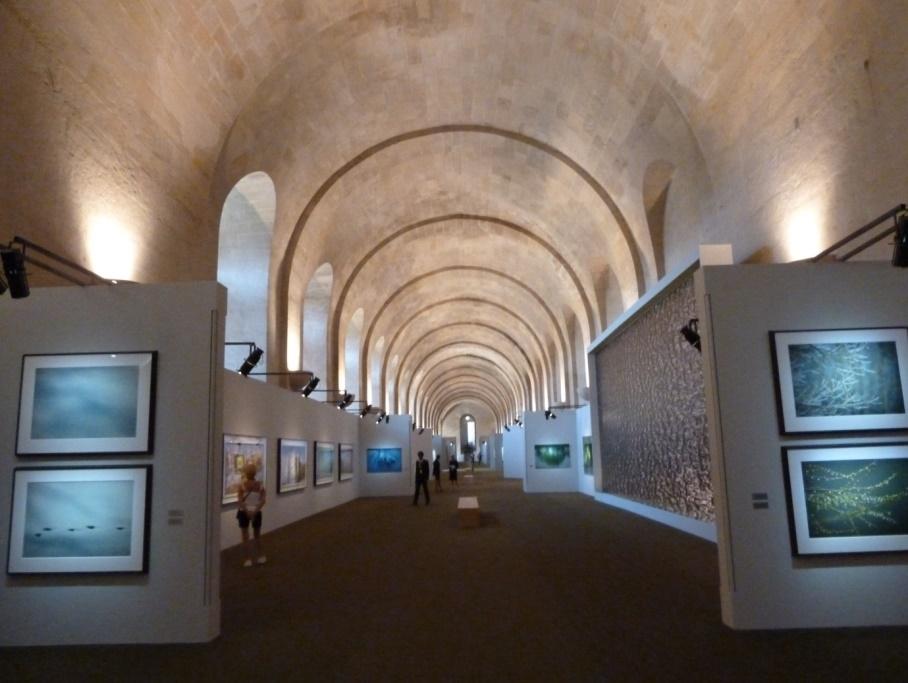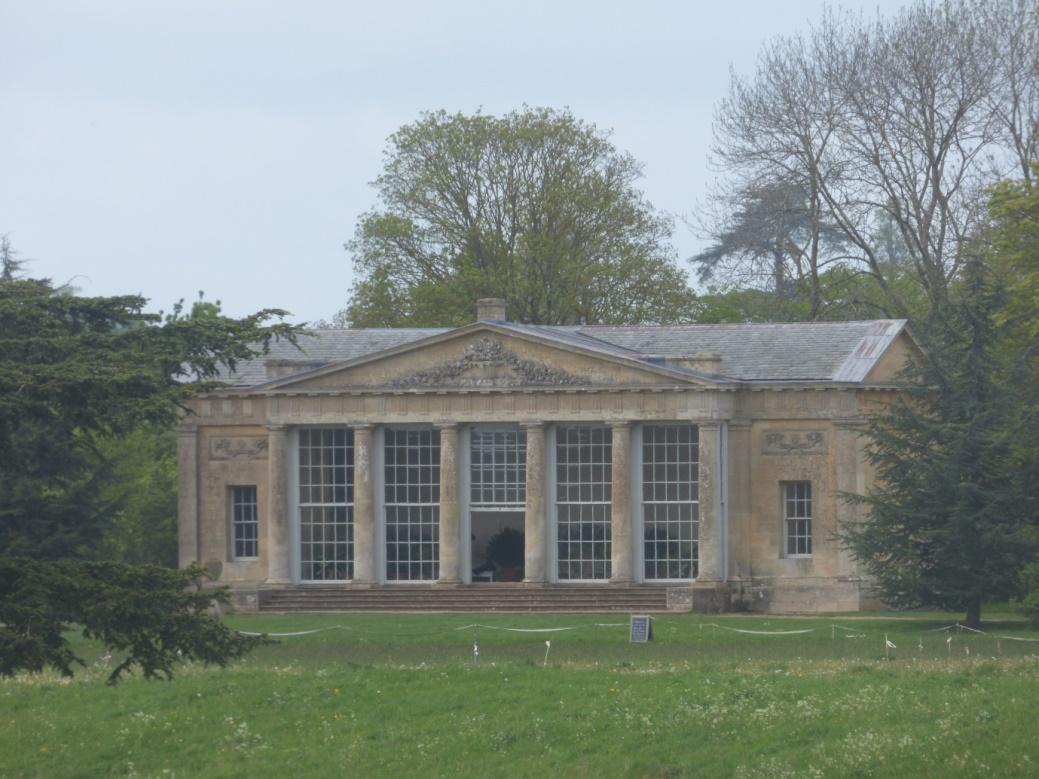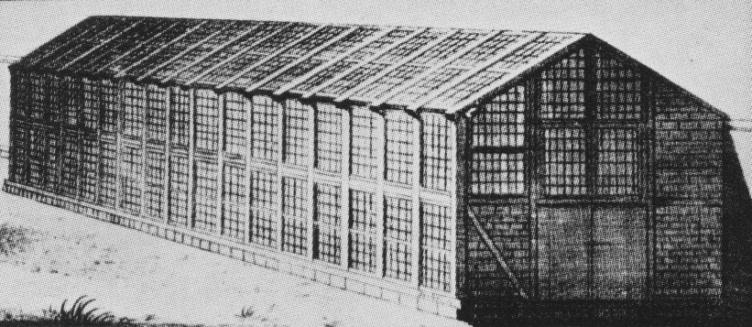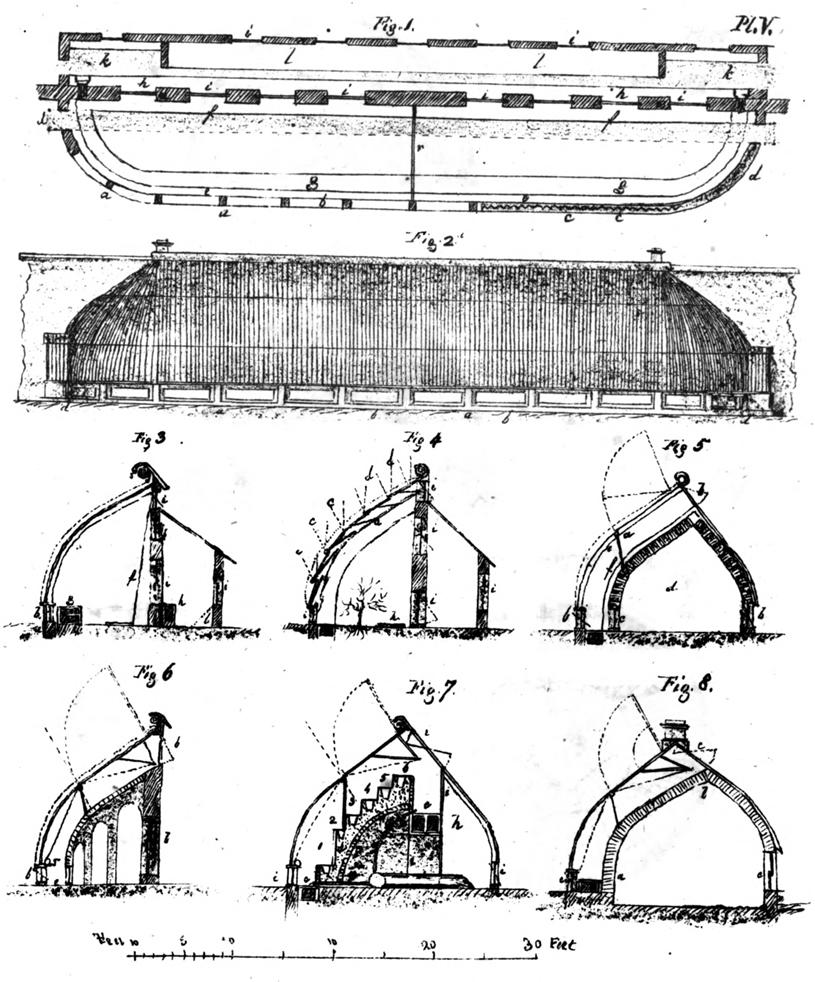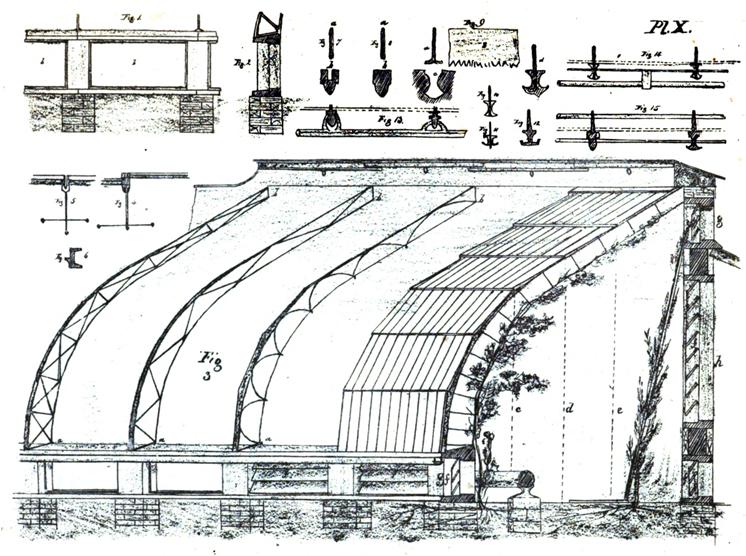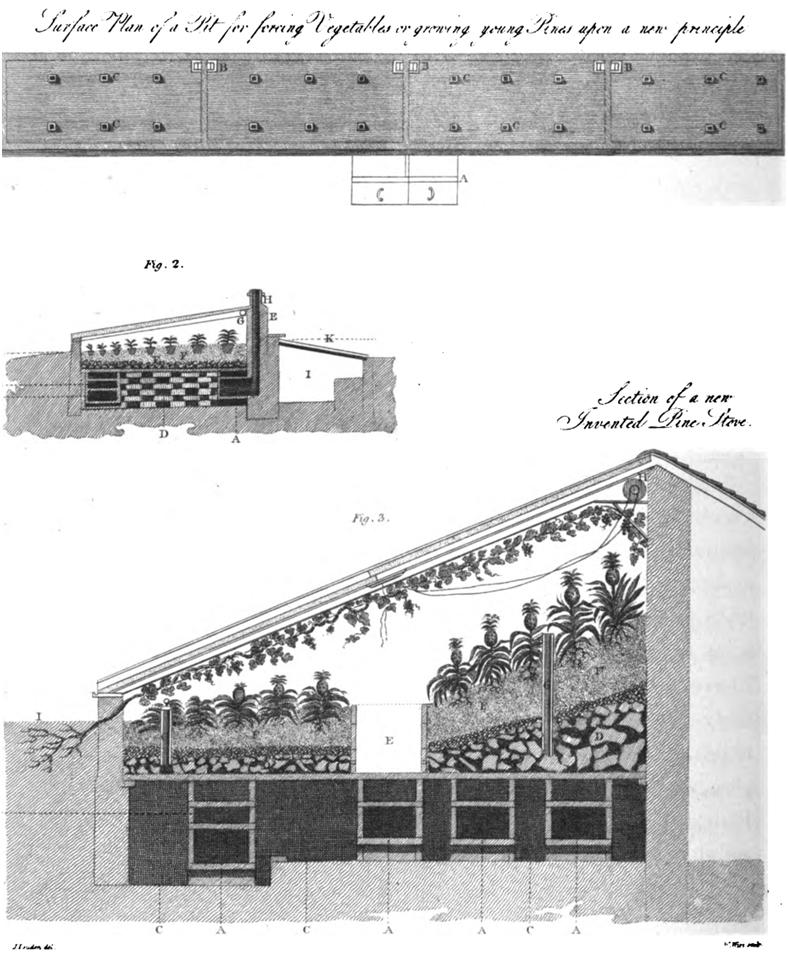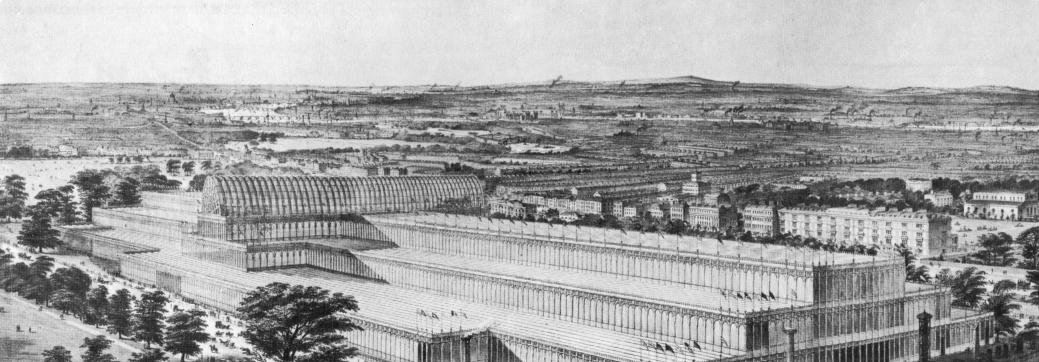Design and Construction of Bioclimatic Wooden Greenhouses, Volume 1:
Preliminary Design 1st Edition Gian
Luca Brunetti
Visit to download the full and correct content document: https://ebookmass.com/product/design-and-construction-of-bioclimatic-wooden-green houses-volume-1-preliminary-design-1st-edition-gian-luca-brunetti/

More products digital (pdf, epub, mobi) instant download maybe you interests ...
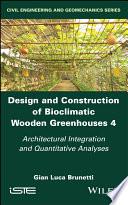
Design and Construction of Bioclimatic Wooden Greenhouses, Volume 4: Architectural Integration and Quantitative Analyses Gian Luca Brunetti
https://ebookmass.com/product/design-and-construction-ofbioclimatic-wooden-greenhouses-volume-4-architecturalintegration-and-quantitative-analyses-gian-luca-brunetti/

Handbook for Building Construction: Administration, Materials, Design, and Safety Clifford J Schexnayder
https://ebookmass.com/product/handbook-for-building-constructionadministration-materials-design-and-safety-clifford-jschexnayder/
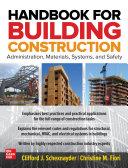
Handbook for Building Construction: Administration, Materials, Design, and Safety 1st Edition Schexnayder
https://ebookmass.com/product/handbook-for-building-constructionadministration-materials-design-and-safety-1st-editionschexnayder/

The Architect’s Studio Companion: Rules of Thumb for Preliminary Design (Ebook PDF)
https://ebookmass.com/product/the-architects-studio-companionrules-of-thumb-for-preliminary-design-ebook-pdf/
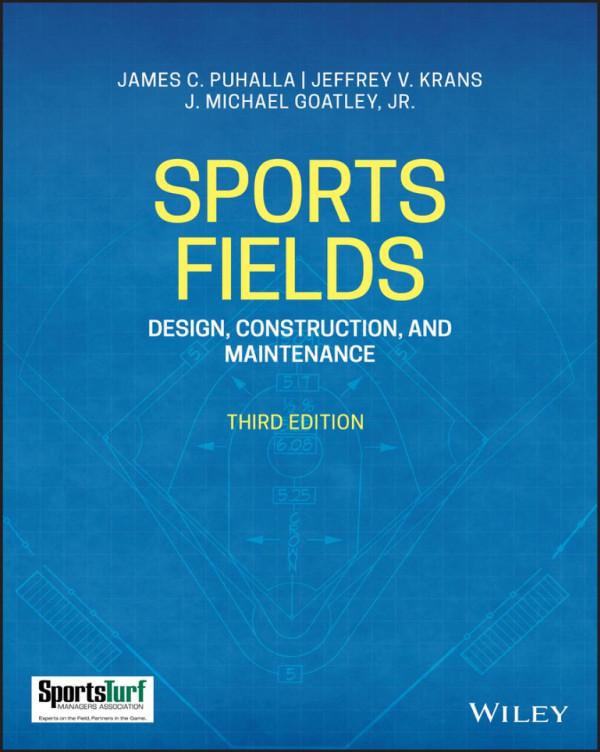
Sports Fields: Design, Construction, and Maintenance
3rd Edition James C. Puhalla
https://ebookmass.com/product/sports-fields-design-constructionand-maintenance-3rd-edition-james-c-puhalla/

Innovative Bridge Design Handbook: Construction, Rehabilitation and Maintenance, 2nd Edition Alessio Pipinato
https://ebookmass.com/product/innovative-bridge-design-handbookconstruction-rehabilitation-and-maintenance-2nd-edition-alessiopipinato/
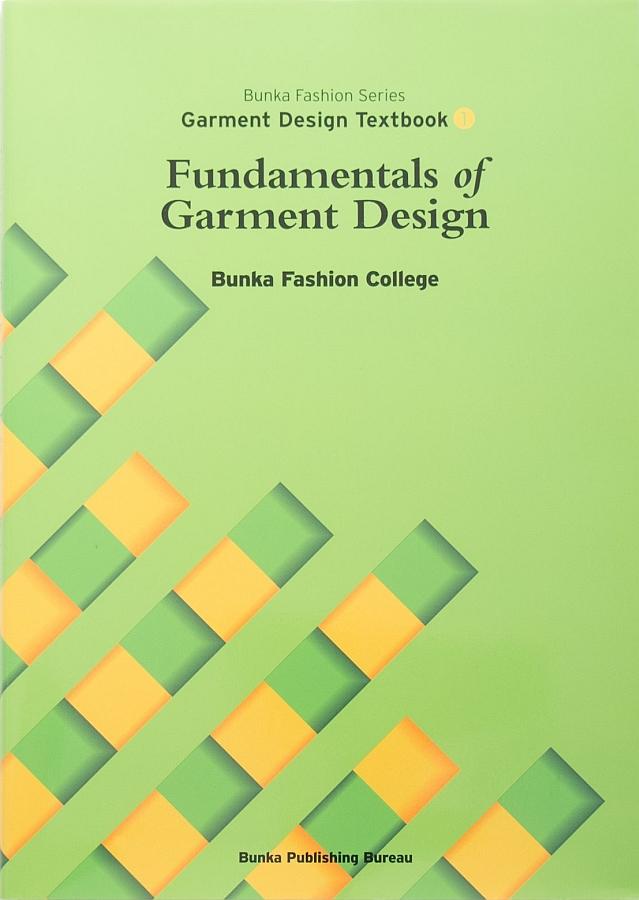
Bunka Fashion Series Garment Design Textbook 1Fundamentals of Garment Design Bunka Publishing Bureau
https://ebookmass.com/product/bunka-fashion-series-garmentdesign-textbook-1-fundamentals-of-garment-design-bunkapublishing-bureau/

Theatrical Design and Production: An Introduction to Scene Construction, – Ebook PDF Version
https://ebookmass.com/product/theatrical-design-and-productionan-introduction-to-scene-construction-ebook-pdf-version/

An Effective Strategy for Safe Design in Engineering and Construction David England
https://ebookmass.com/product/an-effective-strategy-for-safedesign-in-engineering-and-construction-david-england/
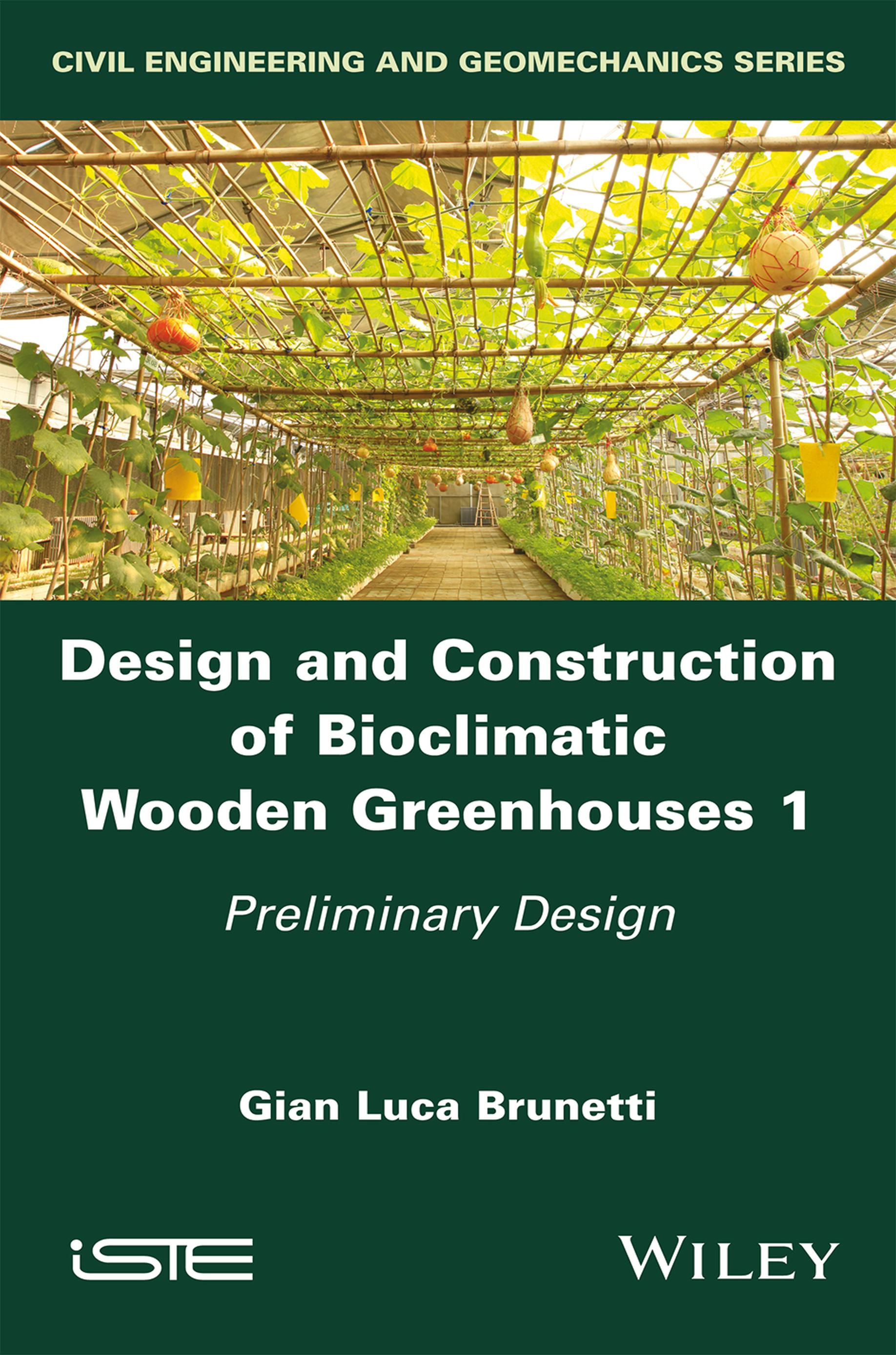
Design and Construction of Bioclimatic Wooden Greenhouses 1
Series Editor
Gilles Pijaudier-Cabot
Design and Construction of Bioclimatic Wooden Greenhouses 1
Preliminary Design
Gian Luca Brunetti


First published 2022 in Great Britain and the United States by ISTE Ltd and John Wiley & Sons, Inc.
Apart from any fair dealing for the purposes of research or private study, or criticism or review, as permitted under the Copyright, Designs and Patents Act 1988, this publication may only be reproduced, stored or transmitted, in any form or by any means, with the prior permission in writing of the publishers, or in the case of reprographic reproduction in accordance with the terms and licenses issued by the CLA. Enquiries concerning reproduction outside these terms should be sent to the publishers at the undermentioned address:
ISTE Ltd
John Wiley & Sons, Inc.
27-37 St George’s Road 111 River Street London SW19 4EU Hoboken, NJ 07030
UK USA
www.iste.co.uk
www.wiley.com
© ISTE Ltd 2022
The rights of Gian Luca Brunetti to be identified as the author of this work have been asserted by him in accordance with the Copyright, Designs and Patents Act 1988.
Any opinions, findings, and conclusions or recommendations expressed in this material are those of the author(s), contributor(s) or editor(s) and do not necessarily reflect the views of ISTE Group.
Library of Congress Control Number: 2022941273
British Library Cataloguing-in-Publication Data
A CIP record for this book is available from the British Library
ISBN 978-1-78630-851-1
1.7.3.
1.9.
1.9.1.
1.9.2.
1.9.3.
1.9.4.
1.9.5.
1.9.6.
1.9.7.
1.9.8.
1.9.9.
2.2.
2.2.1.
2.2.2.
2.2.3.
2.2.4.
2.2.5.
2.2.6.
2.2.7.
2.3.
2.4.
2.5.
Chapter 3. Fundamental Complements
3.1.
3.2.
3.3.
3.3.1.
3.3.2. On the heat transfer by conduction between attached greenhouse and building ................................
3.3.3. On the heat transfer by convection between attached greenhouses and buildings ..............................
3.3.4. On the types of thermal masses within greenhouses .............
3.4. On the role of thermal masses for passive greenhouse heating .........
3.4.1. On the combination of heat transfer by convection and conduction in attached greenhouses ................................
3.4.2. On the thermal masses loaded by direct radiation
3.4.3. On the thermal masses loaded by reflected radiation ............
3.4.4. On the thermal masses loaded by convection.................
3.5. Passive cooling of greenhouses ...........................
3.5.1. The role of thermal masses in the passive cooling of greenhouses .....
3.5.2. Thermal mass for thermal inertia .......................
3.5.3. Thermal mass for coolth storage via “night flushing” ...
3.5.4. Natural ventilation ...............................
3.5.5.
3.5.6. Criteria for predicting wind flows by means of streamlines
3.5.7. Stack-effect ventilation .............................
3.5.8.
3.6.
3.6.1.
3.6.2. Indirect evaporative cooling ..........................
3.6.3.
3.6.4. Evaporative cooling with still water and air moving over it
3.6.5. Evaporative cooling with water in movement in a container or channel, possibly on corrugated surfaces ............................ 214
3.6.6. Evaporative cooling via water sprinkled by pressure as droplets through nozzles, or falling by gravity ............................. 214
3.6.7. Evaporative cooling by wetting surfaces and transferring the coolth by convection or conduction ...............................
3.6.8.
3.6.9.
3.6.10. Heating and cooling through seasonal storage strategies involving thermal exchange with the ground ..........................
3.6.11. Layout of cooling strategies in bioclimatic charts .............
3.7. Greenhouse features deriving from use and typology
3.7.1. Agricultural greenhouses
3.7.2. Specificities of inhabitable attached greenhouses ..............
3.7.3. Stand-alone solar greenhouses
3.7.4. Lean-to, attached solar greenhouses
4.1. Considerations related to shape
4.1.1. On the symmetry between solar aperture and heat-loss aperture
4.1.2. On the optimal tilt of front façades
4.1.3. On the greenhouse “thickness”
4.1.4. On the greenhouse width
4.1.5. On the greenhouse height
4.2. Considerations combining shape
4.2.3. On the greenhouse “knees”
4.2.4. Rainwater catchment and collection
4.2.5. Floors
4.2.6. Additional considerations about the shared wall between the greenhouse and the building
4.2.7. Stack-effect-driven heat exchange with the ground during daytime
4.3. Ventilative considerations
4.3.1. Openings on the greenhouse and the building as regards wind-driven
4.3.2. Directionality control for wind-driven ventilation
4.3.3. Openings in the shared wall with respect to wind-driven ventilation, with the greenhouse front in
4.3.4. Openings in the shared wall as regards wind-driven ventilation, with the greenhouse front in depression
4.3.5. Openings in the shared wall as regards wind-driven ventilation, with the wind direction parallel to the fronts
4.3.6. Combination of stack-effect and wind-driven ventilation using the openings in the shared wall
4.3.7. Ventilation
4.4.
4.4.1.
4.4.2.
4.5. Movable
4.6. Microclimates in
4.6.1. Cold-sink
4.6.2.
4.7.
Foreword
This a work for which we have been waiting for a long time, because it confronts the problem of sustainability without starting from general energy-saving principles and the ways in which Prometheus stole energy from the Gods (nature), but, more simply, from a device that not only embodies in itself the general terms of the problem, but also, and above all, has the capacity to extend its domain to numerous disciplinary areas: architectural design, building energy, construction materials, aesthetic perception, natural lighting, ventilation, physical well-being, regulations, etc. The greenhouse becomes almost a pretext to traverse new ways through which humans discover hidden forces in nature waiting to be freed. In this work, an explicit, strong desire for pacification with nature can be recognized, combined with a desire to make the generous properties of nature emerge, to build a sincere and determined dialogue that does not require “active” procedures and external energies, but produces what it needs simply by extracting from itself what it already has in itself, hidden in the mechanism of transformation of solar radiation into heat energy.
But all this, which is internal to a rigorous scientific path, cannot help to have significant consequences not only on the manner in which urban artifacts are used, but also, and above all, on their spatial organization, on the languages and new materials that this experience carries with itself, thanks to the fact that it involves all of the procedures of architectural design, at all scales.
Today, it is difficult to imagine what the next new forms of living and inhabiting will be. But what we can expect is that they will be structures in which thermodynamics, in its diverse applications, will play a significant role. It is completely natural that, in the new tendency, the energy issue will have to enter into
Design and Construction of Bioclimatic Wooden Greenhouses 1
a dialogue with all the forces boiling up in the design world, and that – and above all – it will have an essential role in the considerations that are born around the concept of place, in which the historical–social experience will also find reasons in those physical variables that belong to the concept of environment. These are variables that can be measured and compared, and that can influence the thermal gradient triggering the signal of well-being.
After all, this work on greenhouses already shows, in some historical examples, that the phenomena linked to site position, orientation, slope, material, etc. are often related to rules born from simple laws of nature such as gravity, transmission of solar radiation, seasonal cycles, wind, ground, transmissivity, isolation and storage. In this manner, in architectural design, a process takes a shape such that the interrelations that are born between a simple object of design (the greenhouse) and a broad disciplinary range are the product of a series of contaminations in which beauty and function put into discussion analogical references spanning from simple envelopes conceived for botanics and agriculture, to exposition places, to houseintegrated greenhouses, to greenhouses as spaces.
But how much of the living space of humans is a design theme? For now, we are witnessing some bold experiments in which architecture tries to go beyond the simple addition/filter of a greenhouse body to become an integrated structure, up to the point of transforming the living space. The transparencies of Mies van der Rohe, dissolving the limit between inside and outside, complexify themselves, for example, within the projects by Lacaton and Vassal, up to the point of becoming devices capable of climatizing environments that renounce neither the landscape nor well-being. We are witnessing multiple attempts that not only try to answer the simple energy quest, but also have the courage to reflect on the ways in which a new language in architecture is being formed. More and more frequently, new forms deriving from technological and formal experiments put the novel ways of living on trial; and with them, the materials and spaces mix up the traditional functions on the basis of new hierarchies and relations.
But where do the new forms come from? What tensions are sustaining and orienting them?
We often see bizarre and gratuitous proposals that arise from an obsessive need for new and unusual formal structures; a need that gets exhausted by itself. This is an old thread, involving the concept of autonomy of architecture and the very complex relation of architecture with the evolution of society and its representation. Today, we are witnessing a mutation that involves both the world of digitization and
that inherent in the energy issue and its reflection on environmental problems. It is entirely legitimate that we ask ourselves how these changes can impact not only the forms that support the reasons for economic choices, but also the new cultural sensitivities that assign the task of reconsidering the relationship between artifice and nature to human intervention. Then, mitigation interventions such as greenhouses do not simply add themselves to the existing artifacts, as so often happens, but become an architectural project by themselves, proposing themselves as a new form in which temperature and light, heat storage and transparency, ventilation and exposure produce a new order.
This is a research path in which the legacy of the past plays an essential role in the verification of proposals whose principles (and not just forms) arise from real experiences and theoretical reflections. Paxton’s cathedral, or palace, represented a real revolution, where an ancient basilical scheme was realized in iron and glass, flooding the indoor spaces with light: a magic, even though the technology entailed significant problems at a thermal level. This experimentation, however, precedes the theme of urban galleries (W. Benjamin), which extends the search for the artificial space that will later produce the magnificent typologies of “urban living spaces” of the 19th century. All of the artifacts such as park greenhouses or the wide glass surfaces of curtain walls represented a sort of karst river that re-emerged in virtue of that research, which leaves the task of indicating strategies aimed at saving energy to architecture and urbanism. While remaining within its own disciplinary domain, architecture is called upon to propose and experiment with new models in which thermodynamics becomes the new “stone guest”.
The analogy with the fracture produced by the Modern Movement in relation to the great urbanization processes is completely spontaneous. From the criticism of the 19th-century city, proposals arise that extend to all problematic and design scales that found – in relation to artistic experiences – new forms that are also new lifestyles. The Frankfurt kitchen, with its determinate functional analysis, also becomes a formal prototype that can be taken as a symbol of a different role of the architecture of modernity. The design that, at the beginning of the century, enters in strict relation to social and economic problems, producing a new idea of living in its spatial organization. Today, the search for alternative energy sources, both active and passive, plays a fundamental role in understanding the new trends, even if the results appear under-trace and are supported only by a few sectorial magazines.
Although this research is considered marginal or niche, however, with difficulty, some attempts are being made to experiment with spatial structures and architectural artifacts that interact with the organization of urban settlements wherever the energy that feeds both public and domestic uses requires a different balance. The design
process presupposes a new relationship with the laws of thermodynamics from which the first attempts at new propositions emerge, which are initially expressed through the simple assembly of the new devices on already tested shapes. This is an understandable path that sees the birth of new architectural experiences, starting from the acquired structures that, little by little, morph from chrysalis, until the new shape and new colors of the butterfly appear. From simple “parasitic” objects that cling to traditional volumes, greenhouses try to decline all their possibilities: they insinuate, envelop, include, collect what existed, and, in doing so, they give it new life. Little by little, we witness the birth of new and original formal structures.
This research by the author is a sort of game in which, by privileging a small phenomenon (the greenhouse), he lets himself be led, as in a laboratory experiment, to the observation of the complex effects of which it is a part. Effects that never forget that intertwining between the environment and the landscape which, in the pervasive ideology of the concept of sustainability (now abused and often distorted, in many sectors of culture and production), has produced many confused and contradictory visions that have not found a balance between the concept of place, with its history and its beauties, and the concept of physical space, with its quantitative figures. This is a combination that cannot be trivialized by removing one of the two terms or by privileging only one aspect of the question but, on the contrary, must be assumed by accepting the magnificent intertwining, in which the aesthetic values of the landscape coexist with the measurable and quantitative aspects of the environment. The coexistence in question moves within a complex territory with strong roots in reality and unitary characteristics, and arises from an explicit design contribution where the tension towards construction aims to overtake the tired reproposal of models repeated up to the point of preventing any new contribution. Architectural design brings together all of this, which, despite its autonomous linguistic research, cannot exclude itself from transforming an economic and social problem into a set of formal structures in which the greenhouse device becomes one of the magnets that can contribute to introducing order and form into contemporary architecture. The design process combines the different inputs into a single proposition in which the heterogeneous values of the shape coexist with those of the measure. This can be understood from the way in which the author revisits the shapes of the greenhouse over time: the internal light, the scent of lemons, the humidity and the warmth of the environment. But all this without giving up a performance approach in which the accuracy of the device is measured and evaluated for the effectiveness of the results.
In his incipit to “The Man without Qualities” (1930–1942), R. Musil, a man of letters and engineering, describes a normal natural phenomenon as “a beautiful day in August”, starting from the two points of observation, apparently
irreconcilable, but which concern the same object: the point of view of the natural sciences and that of the human sciences, so that we discover that artifice and nature, science and poetry, belong to the same domain. It is as if emotion could have its counterpart, its projection, into the world of accuracy.
Over the Atlantic, a barometric minimum was advancing in an easterly direction towards a high looming over Russia, and for the moment showed no tendency to dodge it by moving north. Isotherms and isothers behaved properly. The air temperature was in normal relationship with the average annual temperature, with the temperature of the hottest month as with that of the coldest month, and with the monthly aperiodic oscillation. The rising and setting of the sun and moon, the phases of the moon, Venus, the rings of Saturn and many other important phenomena followed one another in accordance with the predictions of the astronomical yearbooks. The water vapour in the air had the maximum tension, and atmospheric moisture was scarce. In short, with a phrase that, although a little old-fashioned, sums up the facts very well: it was a beautiful day in August of the year 1913.
The poetic image of the “beautiful August day” presupposes a particular physical–environmental condition that is necessary, but not sufficient, to convey that feeling that is the perception of the landscape, because the observer’s emotion is lacking.
The author of this work analyzes and describes the greenhouse as a positive, existing fact, the principle of which, before residing in a definite type, is born from its specific properties (orangeries, exposition space, vegetable garden, building prosthesis, factory, tunnel, etc.), which define different forms of functional and special modality. That this greenhouse was a bright and welcoming space is something that is said by us.
The author endeavors to give us back that “machine of everything” (Raphael), characterized by how it produces heat and preserves it. It is up to designers to interpret those principles and find solutions compatible with today’s scenery. The author leaves the multiple possibilities open, without defining forms, but rather inviting us to experiment, within the measure, new and courageous solutions suited to accepting uncertainty and hybridizing those forms and measures that have stolen some properties from palaces and factories. After all, the procedure that the author defines as based “on waves”, studies this phenomenon as a sequence propagating in time and space and involving a succession of problems and themes spanning from historical experiences (which fixate the fundamental problems) to the most recent experimentations, always making the greenhouse emerge as a part of a process
rather than a type in itself. What is put into play is not a classification experimentation based on the canons of formal typology and covering all the problematic functional range of cases embedded in handbooks of proven proposals for professional use, which would require conceiving the artifact as a given structure, subject to simple contextual tricks, already ready for use and, after all, always equal to itself. On the contrary, the author’s aim is to let a wide field of possibilities emerge, made of analogies open to multiple opportunities and combinations.
In this framework, the designer is invited to reflect on the scientific role of “passive” energy strategies as components of a research that, in itself, certainly does not demonize the “active” ones, but that, controversially, re-evaluates the passive ones for the radical nature of their natural energy and for their being ever-present where the sun gives its radiation, with almost no requirement of technological investment. The “device” of the greenhouse, in this way, gets isolated and analyzed in itself and in its specific identities, with the awareness that it is, in any case, a part of that more articulated complex responding to the issue of energy saving and its possible strategies.
The theme of the greenhouse, its solar gains, heat losses, ventilation and accumulation, is analyzed here with commitment and rigor, as well as in calculation criteria and simulations: a very delicate operation when we cross ventilation and temperature, humidity and light, to verify the level of well-being which constitutes, then, what is of most interest. But what appears most significant here is certainly the method of investigation, on the basis of which the study does not start from the most general premises of the energy problems, for deriving the greenhouse device, but, on the contrary, from the given object, as if it were an archaeological investigation, a found object of which we try to reconstruct the meaning and value of use. An object that found our author in the moment of his formation, and which insisted on being a central research fact. What is it, what is it for, how does it work, with what materials? It is the object “greenhouse”, a specific physical and material datum suggesting a culture, a historical moment, a technology and the role it played in human relations.
From the experimentation of the broad windows of the orangeries, to the crystal envelope of Paxton’s cathedral, up to geodesic domes, the greenhouse passes from the functional role linked to botany and exposure to that of an artificial habitat in which humans find their due comfort. A simple functional device can transform itself into a living space in which humans can coexist with an exuberant nature, and also into a large public space hosting multiple functions (exhibitions, galleries, commerce, gardens, games and meetings, etc.). Poor materials such as wood, iron
and glass, typical of industrial buildings, trace metaphors today that derive from the large sails that formed the habitat for the cultivation of rare essences, and in this mantle of light, all the charm of a space that is a garden inside the house and in the city remains, as well as an easy and low-cost resource to manage.
Remo DORIGATI September
2022
Introduction
I have had the intention of writing a book about bioclimatic greenhouses for a very long time, but I only really began to work on it when I found myself completing it by just writing down (and drawing) what I already had in mind, rather than rehearsing the contents before beginning to write. The reason why I waited so long is that I felt the task was going to be tough, due to the myriad connections that greenhouse design has with lots of things in both architecture and nature – which is something that I have strived to give an intuition throughout the text.
The depth and pervasivity of these connections is the main reason why I became fascinated with greenhouses in the first place, since the old days of my PhD research. Indeed, back then I had already realized that I was more interested in gaining a broad knowledge about a specific thing (e.g. a complete view of a relatively simple object, like a greenhouse), rather than a narrow competence (like, say, roofings or air conditioning systems) regarding a complex object (like a complex building), despite the fact that the structure of modern knowledge is closer to the latter. But I have to admit that the fact that I tend to be a contrarian has also contributed to fostering my interest in greenhouses. Greenhouses, indeed, are perfect for a contrarian, because they defy expectations: they draw out a lot from almost nothing, to the point that even their domain boundaries are difficult to define. Indeed, a greenhouse can be many things. It can be something heating a house, or it can be the house; it can be a place where plants thrive, or the harshest of places; it can be a food-producing device in a factory, or a building “parasite” on a 24th floor; it can have the aspect of an inorganic double façade, or of the darkest and moistest shadehouse.
Inferring the general from the specific, however, requires a lot of cross-disciplinary competence. Indeed, managing the many functional aspects governing the environmental behavior of a greenhouse involves such an intertwined knowledge that, once grasped, we can understand most other bioclimatic building
types and systems. My hope is that this work can facilitate the path towards that end, and help the reader to go beyond what they may ordinarily receive.
The aim of an integrated understanding is the reason why I have organized the content of this work in “waves” overlapping each other – as you may find in a narrative – rather than in compartments – as you might find in a handbook. As a result, the focus of these chapters and volumes transitions progressively from geometrical considerations related to solar gains and heat losses, to heat transfer and storage, to natural ventilation and cooling strategies, to the functional consequences of different types of use of greenhouses, to construction criteria, to greenhouse typologies, to calculation and simulation criteria, to examples of good practices; and these transitions occur in a recursive manner, again and again. Each time, hopefully, gaining some depth and momentum.
The goal of this line of attack is to make this work capable of standing for a thorough reading, while at the same time capable of tolerating some skipping, or direct landing into specific parts.
Regarding the targeted readership, I often find myself realizing that, because I am an architect by education, most of the time, involuntarily, I often end up speaking above all to architects, hinting at a knowledge that I believe we may share. But because I also happen to be (I have always been) interested in everything (as some architects sometimes are), I am hopeful that this work may succeed in delivering information that is also suited to a broader readership.
The contents of this work have been organized in four volumes and four thematic areas: Volume 1, preliminary design; Volume 2, design and construction of structures and systems; Volume 3, design and construction of envelopes; Volume 4, architectural integration and quantitative analyses. In the first volume – the present one– the broadest design choices regarding greenhouses are analyzed. Choices including: what shape should a greenhouse have, and why? How should it be oriented in space? Where should it be transparent, and where opaque? How can it be shaded? Where should it be openable for ventilation, and how can it be operated?
There are two notices. The first is about the content of novelty of some of the presented materials. In each volume, I have included, along with sedimented contents, some experimental contents drawn from my own research activity. The reader will be made aware of the experimental contents at the appropriate places. An example of experimentality, in the case of the present volume, is constituted by the passive solar performance ratio presented in section 1.9.1.4.3. The second notice is about the reference listings. The main possible options, when I wrote this work, ranged from referencing the references in the notes, or citing them at the end of each chapter. Both solutions had their pros and cons. So I ended up choosing a hybrid
approach, in which the references have sometimes been cited alongside the text, and in any case in an “On references” closure at the end of some sections; then they have been re-listed in full in a final “References” section at the end of each volume.
I would like to conclude this introduction by thanking Professor Remo Dorigati (Politecnico di Milano, Milan) for writing the foreword for this work and Professor Joe A. Clarke (University of Strathclyde, Glasgow) for writing the afterword in Volume 4. It is an incommensurable honor for me to have this work of mine opened by Professor Dorigati and closed by Professor Clarke. I admire them both so much. To both of them, I offer my gratitude.



